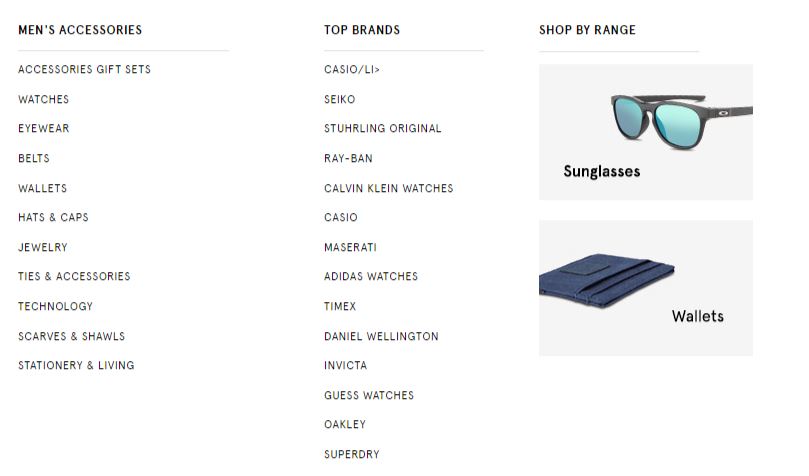Setting a favorable customer impression through an amazing shopping experience is one of the most crucial elements to consider when running a virtual storefront. The way you show your brand through your products has a big impact on client purchasing decisions. It is vital to pique your prospects' interest within the first few minutes of landing on your website.
In brick-and-mortar stores, it is the way businesses decorate their stores based on their target clientele. For example, if a store sells beach attire and accessories, the best course of action is to adorn its storefront and product displays with related decorative elements to entice customers, improve their browsing experience, and possibly lead to a purchase.
The shopping experience in e-commerce is measured by how you project your website to your prospects—in other words, how you display your products. In the retail industry, this is known as product catalog management.
Do you feel like your competitors are catching up to you? Does it seem as though no matter how hard you work to showcase your business online, no actual results are obtained? If you answered yes to both questions, you may have poorly handled your e-commerce product catalog management.First, let’s define what a product catalog is to better understand how online catalog management and its sub-contexts work.
What is a Product Catalog?
A product catalog is a collection of data about a specific product in your product listings. A standard product catalog includes all necessary commercial information. It includes the product's name, SKU, or stock-keeping unit (used to identify and track the product's inventory status), product category, product description, price, customer ratings (typically represented by a point-rating scale), and product image. Some product catalogs can go even further by breaking down such information into more detailed specifics, from dimension specifications (particularly for clothing products) to other available versions (usually for devices), to the year the product was manufactured and launched, to name a few.
A well-optimized product catalog also enables companies to present extra product listings based on the customer's browsing or purchasing patterns. Not only does this allow the merchant to upsell their products but it also provides extra purchasing options for customers, allowing them to discover even better deals, thereby improving their overall shopping experience.
Here’s an excellent example of product catalogs from Amazon:

What is E-commerce Catalog Management?

Product catalog management (also known as product catalog optimization or digital catalog management) is an e-commerce strategy for organizing, categorizing, and structuring all information about a specific product database while also ensuring that it is always up to date across all available sales channels.
Presenting a comprehensive product catalog allows customers to have a more seamless shopping experience because they can easily see what type of items they are looking for. It promotes a feeling of assurance that encourages them to initiate a sale transaction.
Product Catalog Management: Why is it Important?
Now that you understand what a product catalog and product catalog management are, you can see why they are important. Product catalog management allows you to maintain consistency and accuracy in all of your product listings across sales channels. It’s instrumental in empowering your workforce by boosting their productivity significantly as you begin to gain traction on all of your existing and future sales channels.
Moreover, your ability to project your brand through a high-quality product catalog is critical to your success in the dynamic marketplace. Most businesses that overlook the importance of optimizing their product catalog in conjunction with omnichannel strategies quickly lose marketing momentum.
Still not convinced that optimizing your product catalog makes wonder to your brand? Here’s a rundown of its most notable benefits:
1. Improved User Experience
Providing a concise description of product features, as well as delivery information, reviews, or links to related items, can significantly improve user experience. Enhancing your catalog management helps you to be more consistent across all sales and marketing platforms.
As such, visitors will likely feel more at ease to explore all the other goods you have in store for them and even potentially convert them into paying customers. Retailers should always integrate their product catalog on a regular basis in conjunction with users' dynamic preferences and shopping histories to increase their predictive capabilities and present customers with more purchasing possibilities.
2. Augmented Omnichannel Approach
Maintaining uniformity in your product catalog throughout your sales channels allows you to give a better omnichannel experience to all of your customers. However, it is critical to ensure that all information about a specific product or service is accessible from multiple sales portals such as the website, social media accounts, or mobile applications (if applicable). Your omnichannel approach from one channel to another must also provide the same experience all throughout for the customer to make the most of their purchasing journey.
Talk to our team!
Send Me a Quote
3. Better Branding
The proper color palette, relevant graphics, calls-to-action, and your logo are just a few of the elements that go into creating outstanding branding. By incorporating these brand-specific characteristics into the UI of your catalog, you can provide a more customer-centric approach to prospective customers. As such, you gain a competitive advantage in the market. Managing the UI of your catalog in such a way that your website style, catalogs, and UI all resonate with one another makes a lasting impression on potential buyers. This is especially beneficial if they are considering purchasing again in the future.
4. Higher Conversion & Retention Rates
A well-executed product catalog management delivers two customer-related advantages. For starters, it has an impact on your conversion rates. A catalog that effectively displays a rundown of relevant information about a product considerably influences the purchasing choice of a customer, enhancing your overall conversion rates. Second, a well-designed and consistent website catalog combined with a dependable customer service system allows you to keep your current user base and encourage loyalty to your brand.
5. Higher Sales
While a well-managed product catalog works like magic for online marketing, it also plays an important role in driving sales off the internet. Assume you have a digital and physical store. Some customers will want to see the item in person even though they have already seen it online. As a result, it opens the door to more sales opportunities. Plus, since the customer already has a prior background of the item (assuming you have a detailed online catalog), speeds up the buying process.
Best Practices for E-Commerce Catalog Management

Presenting a compelling brand catalog is easier said than done. Meanwhile, having prior knowledge of the ways to optimize it, makes it easier to lay out a succinct, precise, and rich product catalog. Below are five of the most noteworthy practices that you can use to manage your e-commerce product catalog more effectively.
1. Reinforce Brand Loyalty Through Comprehensive Product Listings
Your product descriptions must be precise, simple, and accurate. In this manner, your customer becomes easily acquainted with your products. See to it that all information regarding each item is complete and precise.
If you own an online clothing business, include all technical attributes for all of your products in your brand catalog. Then, optimize it in such a way that you can simply access it with a click or two. These characteristics can include the product's name (or model), price, stock status, and/or size options.
You may also include a size chart, short item description, maintenance and shipping information, short descriptions of the materials used, and other features that will help potential consumers become more acquainted with your products. If you want to elevate customer experience further, try adding deals, discounts, and/or product suggestions.
Also, use high-quality graphics to showcase your listings. Product images and videos greatly influence the buying decisions of customers. These visual assets can create a good first impression and immerse your potential buyers in the product. Keeping these pointers in mind allows you to increase the trust of your current customers and foster the loyalty of potential supporters.
2. Keep Your Product Listing Up-to-Date
This is directly tied to making a comprehensive product listing. Update your product database regularly. Doing so helps create personalized buying experiences and assists them in their buying decisions. Assuming that the product in question is already out of stock or that the remaining stock does not fit their size, the buyer may easily decide whether to wait for you to replenish stocks or purchase alternatives from your product listing with similar qualities and so on.
Also if you are counting your product inventory on your digital store and physical store as one, assigning personnel to update the availability of products lessens any discrepancies and misunderstandings between you and your customers.
3. Categorize Your Catalog Accurately
Take special care to ensure that your catalog's navigation is user-friendly. Your product listings should be presented in such a way that users will find the category options with ease.
Here’s a quick look at how Amazon categorizes its products:

You might also want to narrow down your categories even further by specifying the type or brand of men's products, as exhibited by the example below:

Credits: Zalora
Customers can browse and filter products more easily with a well-structured catalog. Offering specific options highlights client convenience, making it a perfect strategy to acquire their trust and retain them for long-term collaborations.
4. Suggest Alternative Items
While it is essential to meet clients' preferences, it is also important to present them with product alternatives that are directly related to or comparable to the product they are looking for. Suggest goods that go well with the item they want to acquire. For example, if a customer wishes to buy a sports shirt, the smart sales move would be to offer a complementing accessory, such as a pair of trousers or a baseball cap.

Additionally, you can maximize the use of tags. Basically, tags in e-commerce stores are details added to the main information of a particular item. It is required if you want your products to become a part of the algorithm and show up in the search engine when a customer searches for the description or brand of the said item. Also, the use of tags pushes your product listings and website to rank on external search engines so that it becomes easier for shoppers to find the item they’re looking for.

Tags can be as generic as they can get because it makes it less complicated for retailers to apply them. Say, if the product at hand is a jacket, then you can add keywords such as outdoor, winter, long sleeves, or any other related term to a jacket.
There are instances when customers don’t have a particular item in mind and just rely on the keywords that they used to search for something. With tags, you increase the chances of your listing being discovered by target buyers. It is also possible that other items in your product list with similar tags will also appear in the search results.
Say, if a customer searches for a pair of pants, all items with the same tag will appear from your product listing as well, giving the customer more options to choose from. Essentially, tags are instrumental if you want to enhance your upselling and cross-selling strategies.

5. Maximize Upselling & Cross-Selling
As previously said, promoting related products is an excellent technique to entice clients to add additional items to their shopping carts. For example, if a customer is purchasing a new gaming laptop, the store can recommend accessory devices such as a gaming mouse, a controller, or even gaming headphones to go with their purchase.
Consider it a fast-food restaurant scenario. When you order a burger, the clerk will usually ask if you want fries or a drink to go with it.
The approach provides a two-way benefit. One, it increases your chances of making more sales. Two, it also allows customers to get the most out of their purchases (assuming they accepted the offer or deal).
It’s Not Just For Display!
We couldn’t agree more! An improved product catalog management is critical in boosting your sales.
Your product catalog acts as a link between your brand and your clients, allowing them to become more acquainted with all you have in store for them. It is for this reason that careful consideration and planning are needed to ensure your catalogs are well-managed at all times.
On the other hand, there are a number of issues that firms may face in the future with their product catalogs. There are times when product descriptions need to be double-checked to ensure that all of the information is correct. There are instances wherein typos are overlooked. Similarly, the dimensions and formats of the website's standard photographs and videos do not correspond to the quality of the images and videos. Worse, some users submit fraudulent reviews on your sales channels with the sole intention of damaging your credibility. These are a few examples of possible harm that you may encounter as you create a product catalog online.
Fortunately, there are firms that offer a one-stop solution for all types of content-related dilemmas through various content moderation solutions. Take Chekkee, for example. We offer dependable content moderation services to protect your website catalog from users who aim to tarnish your reputation. We ensure that your product listings are free from any errors and false depictions. Chekkee helps guarantee that you gain one step ahead of your competitors by providing a safe space for you to showcase your brand online.



